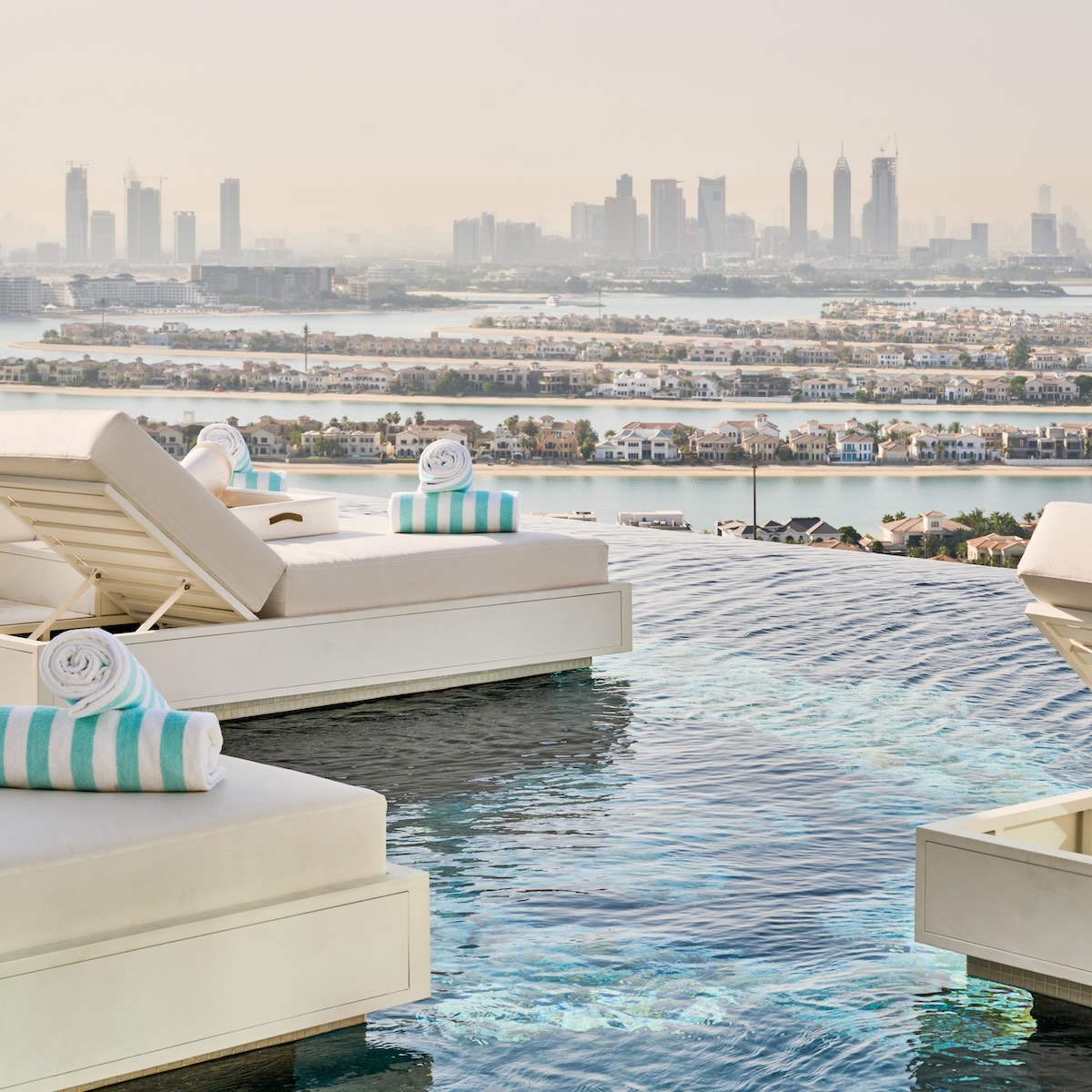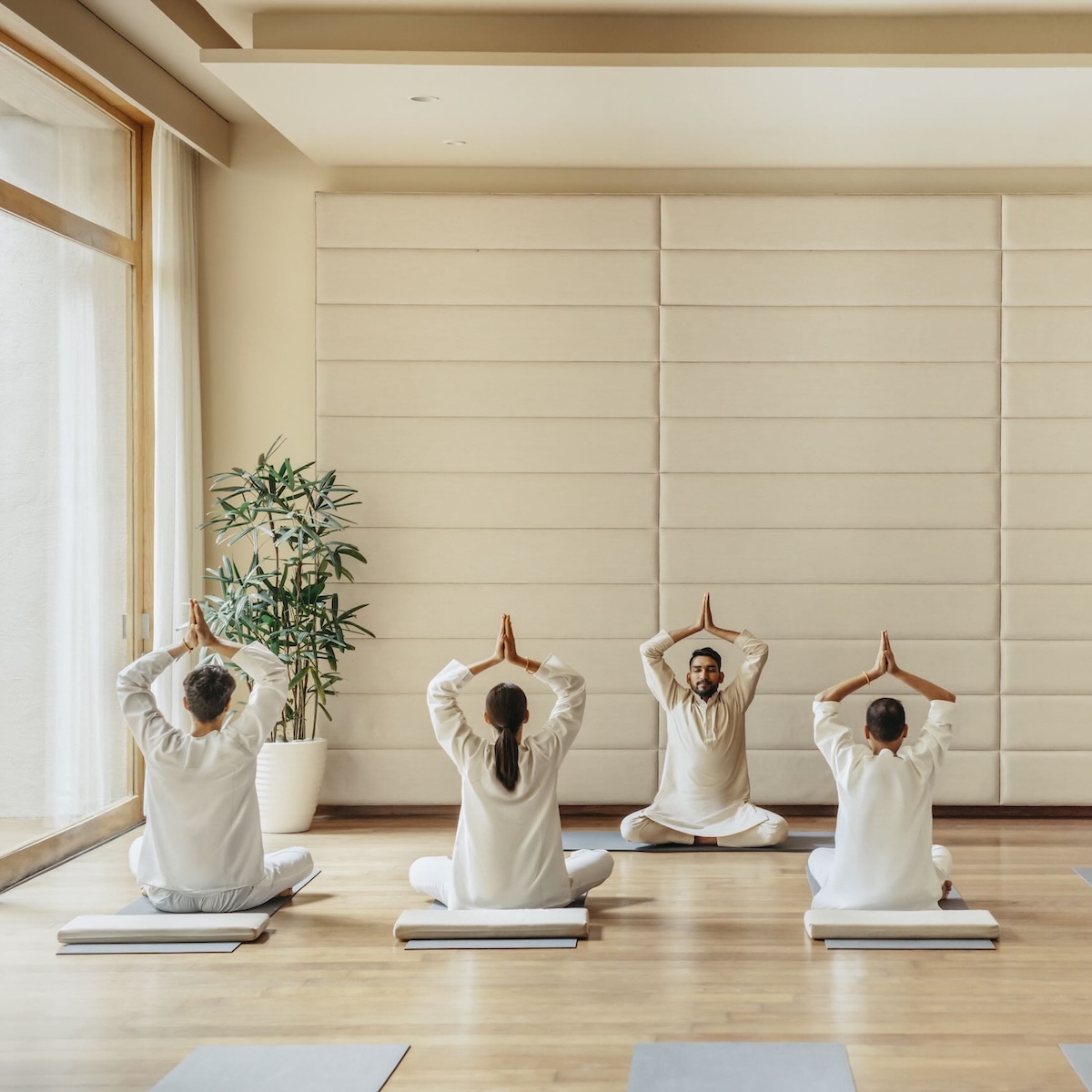Borgo Egnazia in Puglia—Italy’s heel, on the Adriatic—may look traditionally medieval but it’s all new. Think of the house that Jack built, to recall a popular English nursery rhyme—this is the township, the brand, that the Melpignano family built. Aldo Melpignano put it all together. While his mother, Marisa Melpignano, ran family land back home in Puglia, Aldo was working in the US, in finance and hotels. He came home to his Puglia roots in 2007 and oversaw the construction of a typical Puglia township—stone and more stone, houses and walkways, and a lively town square. The architects are local artisans. Interior designers are replaced by Pino Brescia, who apparently wanders at will, no mobile to hand, replacing a bowl of lemons here, a rope decoration there.
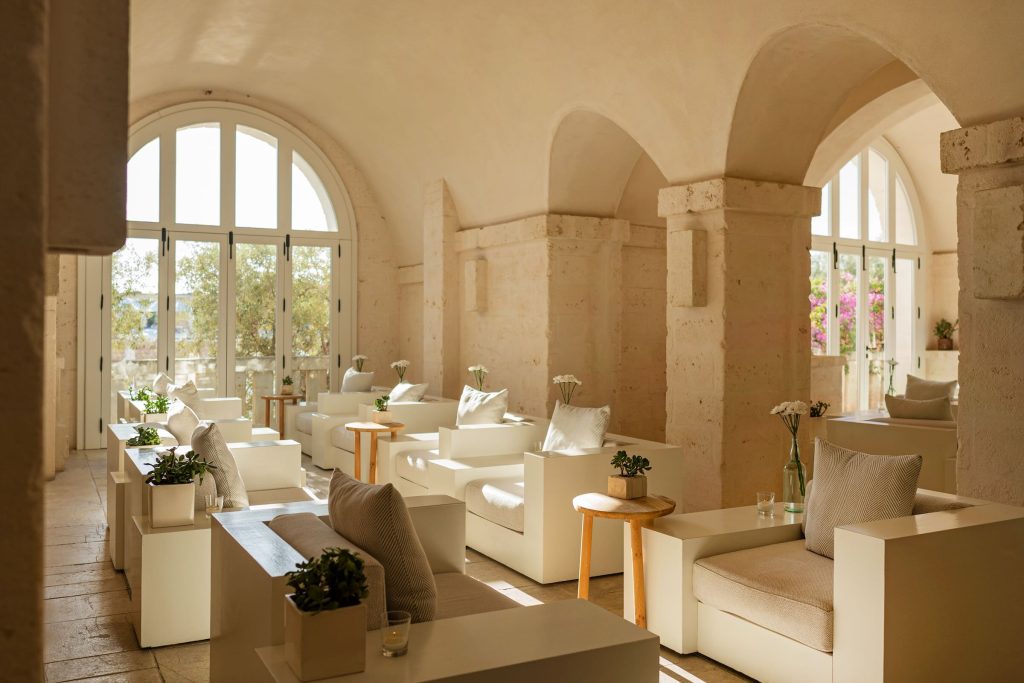
The 183 bedrooms, some in detached villas, have heavy stone troughs; these are filled with rough salt to lower humidity. As always happened, Pino Brescia wants everything traditional. Some rooms have coils of black wire on stone walls. Many have bedside lamp bases that are basically collections of empty bottles standing to attention. Some have walls hung with white-framed glass holding bundles of pages of old books, neatly held with twine tied in bows. Many areas of Borgo Egnazia have ceilings hung with cooking pots as pans, just as ancestors had in their homes years back.
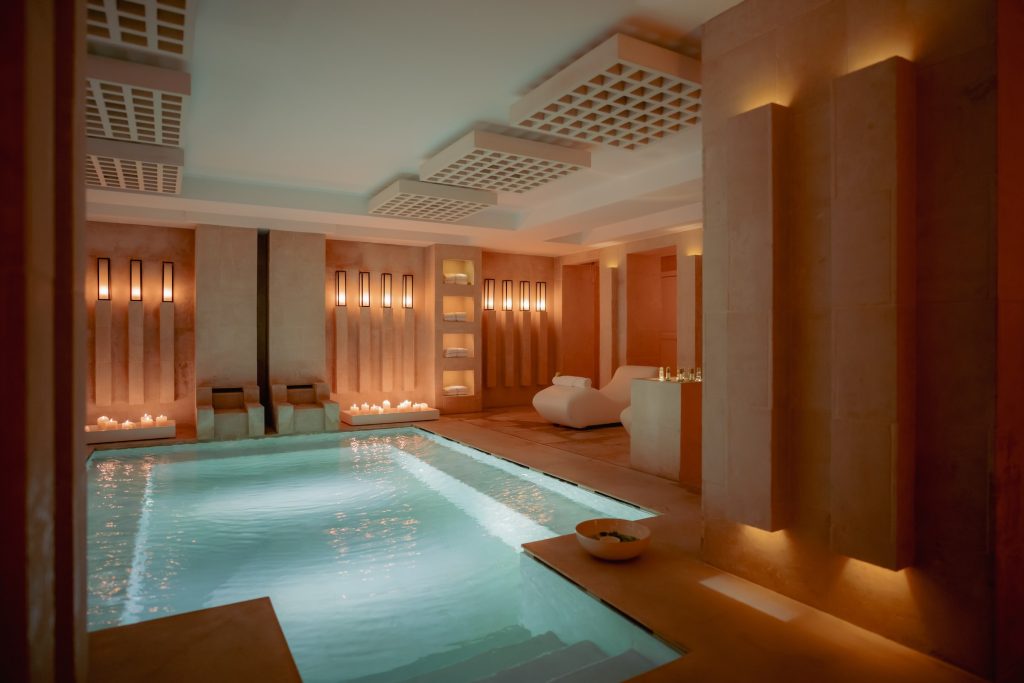
Borgo Egnazia’s tagline is “Nowhere else.” Arrive at its Vair Spa and you are greeted by lovelies wearing the 2024 Milan version of a Roman toga. You feel better, enhanced and refreshed immediately. There are so many wellness and other activities available. One day alone offered an hour’s walking, advanced tennis, a two-hour oenological nose and throat exercise, 90 minutes of taking a sea tour or, alternatively, learning skincare secrets… exhaustion! Also, for kids, there is a complimentary magic school.
Borgo Estanzia has its own cultural historian, Clara D’Aprile. She may be sitting in the town square fashioning necklaces from dried flower heads. She could be making candles or telling stories. She’s one of 800 locals running the hotel, its beach club, a substantial spa, an 18-hole golf course, boutiques, and restaurants.
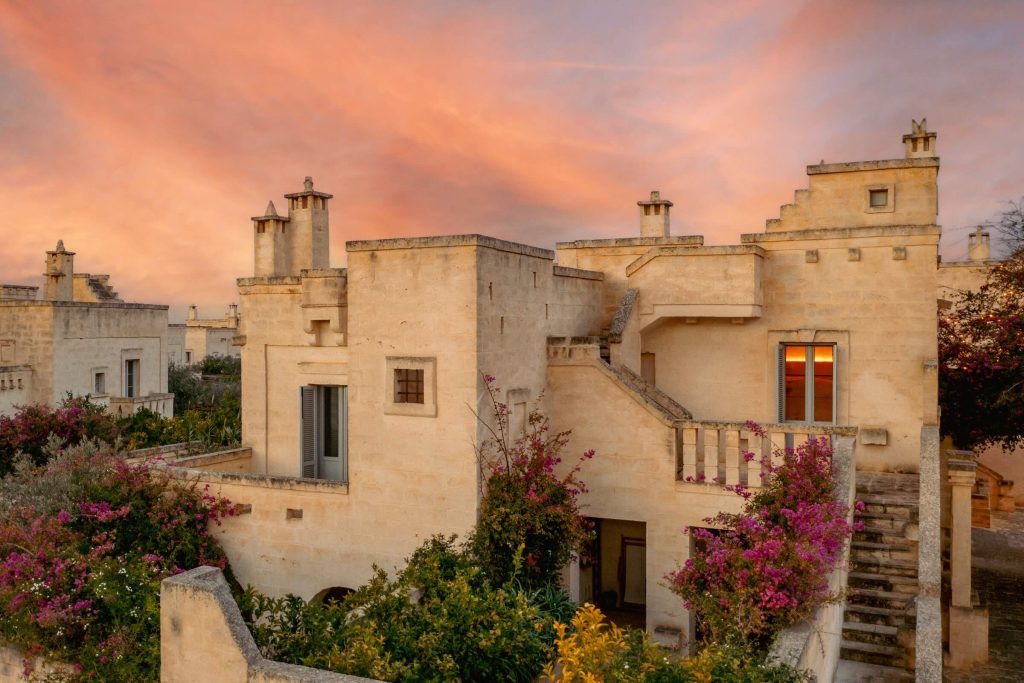
Some evenings, there are traditional culinary markets in the town square. Someone spent the whole evening making one-bite sizes of mozzarella—just pull a long string of cheese from its whey bath and twist a bit off. Around the square were other stalls, masses of them. A whole baked fish here, mouth-watering slices of different hams there. A mobile pizza oven produced a selection of focaccias. Everyone, it seemed, flocked to the frisella stall to have bagel-shaped barley rolls, slit in half and double-baked. They are, when required, dipped in flavoured olive oil. Choose your toppings, traditionally cheese and tomato. Aubergine nuggets went very well, too. Eat with your fingers and be prepared to make at least a bit of a mess. The all-in price includes live music and local wines from the Falvo family’s Masseria Li Veli. There was a white, plus a Torrerose 2023 Solento, and a superb 2022 red, Passamante Salice Salentino.
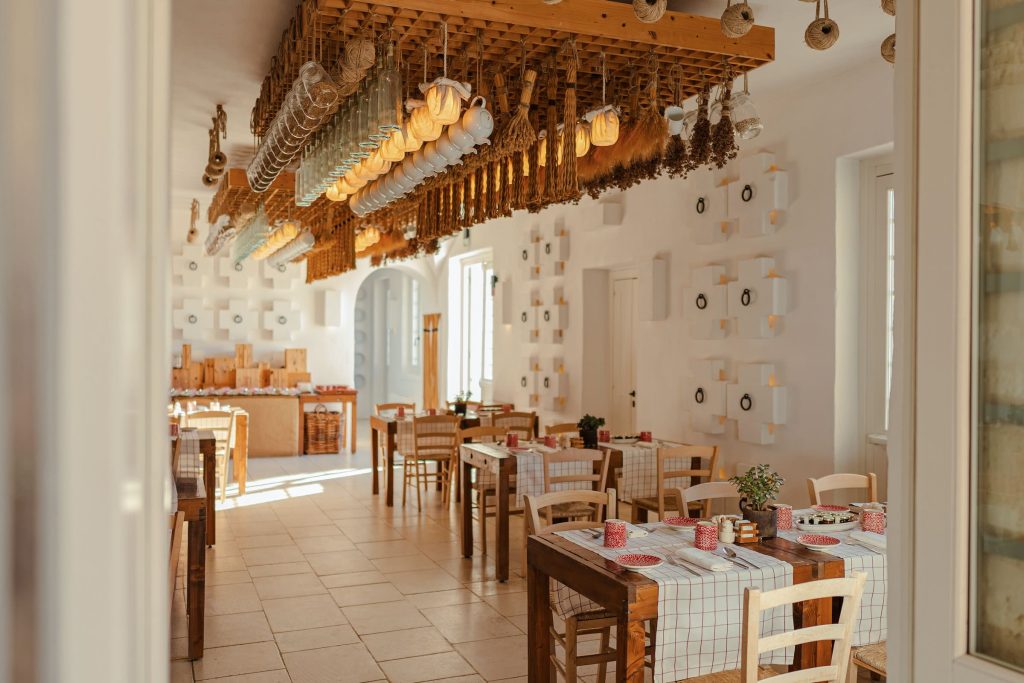
There are more than enough permanent restaurants for every day of the week. At La Frasca, sit outside on an upper terrace. Start with a ceramic bowl of spinach-topped broad bean mash with sides of red and yellow pepper, and fried thinly-sliced zucchini. Follow with a big plate of sliced Podolino beef, with rocket and wafer-thin bits of Puglia cheese. After that, there’s Ristorante Due Camini, Ristorante Il Porticato, Ristorante La Calce, Ristorante La Fresca, Mia Cucina, A Pizzeri, Ristorante Cala Masciola, La Gelateria, and so on. There’s also La Piazza and L’Uliveto and, right on the beach, Ristorante Cala Masciola.

Of course, there’s always room service. In room number 117, look out from the balcony at a bougainvillea-lined alleyway. Helped by local advisors, who curate, instil, and enthuse immersion in Puglia, it feels like home immediately. This author did eat in her room. A pre-ordered 5 am breakfast arrived on the dot, brought by an alert young male server, A trolley with two crisp white cloths, upper and lower, held everything that was ordered, and more: decaf Americano with hot milk on the side, granola with almond milk, Greek yoghurt, a paper bag holding lightly toasted wholewheat sourdough, and a pancake-like whole-egg omelette with cheese.

Someone was miraculously waiting outside the door to carry the Rimowa, as wheeling it over the stone floor might awaken neighbours. The car was ready and left, at six on the dot.
All images courtesy of Borgo Egnazia.






